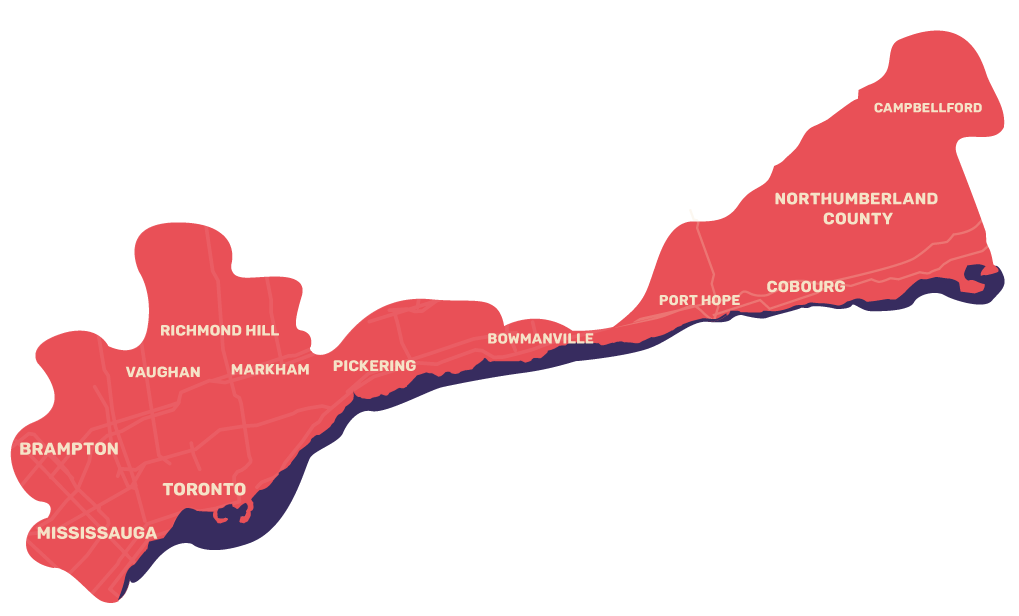Our Glossary
Are you confused about some of the technical HVAC terms we use? Read through our glossary to learn their meanings and definitions.
A|B|C|D|E|F|G|H|I|K|L|M|O|P|R|S|T|U|V|W|Z
A Terms
Abbreviation for alternating current, a type of electric current in which the polarity is constantly reversing causing the electron flow to reverse.
Of or pertaining to sound.
A heat exchanger consisting of two diagonal coils that are joined together in a manner that looks like the letter “A”. Is the indoor component of your air conditioning system located above the furnace.
Annual Fuel Utilization Efficiency. A measure of a gas furnace’s efficiency in converting fuel to energy – the higher the rating the more efficient the unit.
Originally conceived 1909 as industrial use, it is in the 1930’s that started to use for businesses and residential homes. The first use was food preservation. The first cooling system attached to a heating plant was introduced in the 1920’s. General electric was the first to produce the Hermetic system in 1928, and Automobile air conditioning came about in the 1930’s. Air conditioning is the dehumidification process with the luxury of cold air as we enjoy it today.
Removes airborne allergens and dust from your home.
The amount of air the system circulates through your home, expressed in cubic feet per minute (cfm). Proper airflow depends on the outdoor unit, the indoor unit, the ductwork and even whether the filters are clean.
An air moving and/or mixing unit. Residential air handlers include a blower, a coil, an expansion device, a heater rack and filter. Heaters for air handlers are sold as accessories. In some models heaters are factory installed.
A custom installed low velocity central air conditioning system ideal for houses with hot water heating. An air handler is suspended in the attic space and flexible ductwork delivers cool air to the house.
Air Conditioning & Refrigeration Institute
Back to Top
B Terms
British Thermal Unit; the amount of heat required to raise or lower the temperature of one pound of water one degree Fahrenheit. The heat extracted from your home by an air conditioner is measured in BTUs.
British Thermal Units per hour. 12,000 BTUh equals one ton of calling.
A device that uses fuel to support combustion.
The opening through which gas flows to the air/gas-mixing chamber of the burner.
A burner that obtains all air for combustion from outside the heated space.
Back to Top
C Terms
Clean Air Delivery Rate (CADR) provides the number of cubic feet of clean air a unit delivers each minute. Efficiency of the system times the airflow of the system.
The output or producing ability of cooling or heating systems. Cooling and heating capacities are referred to in British Thermal Units (BTUs) per hour.
The metric temperature scale in which water freezes at zero degrees and boils at 100 degrees, designated by the symbol “c”. To convert to Fahrenheit, multiply a Celsius temperature by 9, divide by 5 and add 32 (eg: 25 x 9 equals 225, divided by 5 equals 45, plus 32 equals 77 degrees Fahrenheit).
Abbreviation for cubic feet per minute, a standard measurement of airflow. A typical system requires 400 cfm per ton of air conditioning.
To add refrigerant to a system. This is refrigerant contained in a sealed system or in the sensing bulb to a thermostatic expansion valve.
Trane Air Filtration system that removes 99.98% of airborne allergens down to .1 microns from the filtered air, making it 100 times more effective than a standard 1” filter.
This is the heart of an air conditioning or heat pump system. It is part of the outdoor unit and pumps refrigerant in order to meet the cooling requirements of the system.
Vapor that liquefies due to the lowering of its temperature to the saturation point.
In an air conditioner, the coil dissipates heat from the refrigerant, changing the refrigerant from the vapour to liquid. In a heat pump system, the coil absorbs heat from the outdoors.
The fan that circulates air over the air-cooled condensor.
A switch that can repeatedly cycle, making and breaking an electrical circuit. When sufficient current flows through the A-coil built into the contactor, the resulting magnetic field causes the contacts to be pulled in or closed.
This is the electric resistance heater installed on compressor crankcases to boil off liquid refrigerant that may have combined with compressor oil. Many newer cooling systems do not require crankcase heaters, however heat pumps do require crankcase heaters.
Back to Top
D Terms
Found in ductwork, this moveable plate opens and closes to control airflow. Dampers can be used to balance airflow in a duct system. They are also used in zoning to regulate airflow to certain rooms.
A unit to measure sound.
Direct current electricity. This type of electricity (as opposed to Alternating Current, or AC) flows in one direction only, without reversing polarity.
To melt frost; as in from an air conditioner or heat pump coil.
A degree-day is a computation that gauges the amount of heating and cooling needed for a building. A degree-day is equal to 65 degrees Fahrenheit minus the mean outdoor temperature.
An air cooler that removes moisture from the air.
A grille over an air supply duct having vanes to distribute the discharging air in a specific pattern or direction.
Department of Energy
A furnace that intakes air at its top and discharges air at its bottom.
Also referred to as a condensate pan. This is a pan used to catch and collect condensate (in residential systems vapor is liquefied on the indoor coil, collected in the drain pan and removed through a drain line).
Heat intensity, measured by a dry bulb thermometer.
An instrument that measures air temperature independently of humidity.
An outdoor unit featuring two compressors, one for everyday cooling and a second larger one for extreme temperature days. Provides superior durability designed for cost-saving efficiency and low sound levels.
A pipe or conduit through which air is delivered. Ducts are typically made of metal, fibreboard or a flexible material. In a home comfort system, the size and application of ductwork is critical to performance and is as important as the equipment.
Direct expansion; a system in which heat is transferred by the direct expansion of refrigerant.
Back to Top
E Terms
Energy Efficiency Ratio (steady state), important calculation for the OPA (Hydro One) rebates.
Electronically filters out magnetized airborne particles, from contaminants in indoor air sending them to a collector plate.
Energy efficient system to exchange stale indoor air for an equal amount of fresher outdoor air.
High efficiency systems carry the Energy Star label. The result of manufacturer’s partnership with the U.S. department of Energy and the Environmental Protection Agency (EPA), Energy Star products are more energy efficient and help reduce our whole earth’s pollution problems. Choosing an Energy Star comfort system assures homeowners of lower energy bills and improved indoor air quality for their home.
Environmental Protection Agency.
Also known as a TX Valve, A refrigerant-metering valve with a pressure or temperature controlled orifice.
Part of an indoor air unit, it functions with the air conditioner or heat pump outdoors to cool and condition indoor air that flows over it drawing out heat and moisture.
Back to Top
F Terms
The temperature scale on which water freezes at 32 degrees and boils at 212 degrees; designated by the letter F. To convert Fahrenheit to Celcius, subtract 32 from the Fahrenheit number, multiply by 5 and divide by 9 (Eg: 77 – 32 equals 45, times 5 equals 225, divided by 9 equals 25 degrees Celcius).
Any device that creates air currents.
Any device that removes impurities through a straining process.
Any vent or passageway that carries the products of combustion from a furnace.
That part of the heating system in which the combustion of fuel and the transfer of heat occurs.
A metal strip in an electrical circuit that melts and breaks the circuit when excessive current flows through it. The fuse is designed to break in order to save more expensive electrical components.
Back to Top
G Terms
Gas Appliance Manufacturers Association
Located in the furnace, the heat exchanger transfers heat to the surrounding air, which is then pumped throughout your home.
Back to Top
H Terms
An area, box or coil where heat flows from the warmer to the colder fluid or surface.
Heat added to the conditioned space by infiltration, solar radiation, occupant respiration and lighting.
Any coil that serves as a heat source.
The rate of heat transfer from a heated space to the outdoors.
A mechanical-compression cycle refrigeration system that can be reversed to either heat or cool the controlled space.
The movement of heat energy from one point to another. The means for such movement are conduction, convection, and radiation.
Is a type of air filter. It is an acronym for “high efficiency particulate air “. This type of air filter can theoretically remove at least 99.97% of dust, pollen, mold, bacteria and any airborne articles with a size of 0.3 micrometers (µm) at 85 liters per minute (L/min). The diameter specification of 0.3 µm responds to the worst case; the most penetrating particle size (MPPS). Particles that are larger or smaller are trapped with even higher efficiency. Using the worst case particle size results in the worst case efficiency rating (i.e. 99.97% or better for all particle sizes).
In alternating current (AC electricity), the number of cycles per second.
Often used in attics or crawl spaces, this furnace takes air from its side, heats it and sends warm air out the other side.
Heating Seasonal Performance Factor. This rating is used in measuring the heating efficiency of a heat pump. The higher the number the more efficient the heat pump system.
A machine that adds water vapour to the air to increase humidity.
A humidity-sensing control that cycles the humidifier on and off.
The presence of water vapour in the air.
The amount of moisture in the air expressed as a percentage of the maximum amount that the air is capable of holding at a specific temperature.
Abbreviation for Heating, Ventilation and Air Conditioning.
Provides energy efficient comfort for moderate heating conditions. Can use either gas or electricity.
Back to Top
I Terms
The lighting of fuel to make it burn.
Part of an indoor air unit, it functions with the air conditioner or heat pump outdoors to cool and condition indoor air that flows over it by drawing out heat and moisture.
The combination of an outdoor unit (air conditioner or heat pump) with an indoor unit (furnace or air handler). Split systems must be matched for optimum efficiency.
A control system built specifically for Carrier’s top line Infinity Furnace that allows your controller to be fully integrated with the furnace, air conditioner, humidifier and other indoor air quality equipment.
Back to Top
K Terms
1,000 watts.
Back to Top
L Terms
A type of heat, which when added to or taken from a substance, does not change the temperature of the substance. Instead, the heat energy enables the substance to change its state.
Assess by a mechanical designer or a dealer, the calculation factors in a number of criteria in your home (square footage, number of windows, year-round weather concerns) and determines what size components you should include as part of your total comfort system.
Back to Top
M Terms
System comprised of multiple components designed and engineered to work seamlessly together to enhance overall performance, reliability and efficiency.
The material in a filter that traps and hold the impurities.
Back to Top
O Terms
Original equipment manufacturer.
Ontario Power Authority; the government body responsible for rebates on qualifying Energy Star rated heating and cooling equipment.
Cost of running your home comfort system based on energy usage.
An opening or hole; an inlet or outlet.
In an air conditioner, it dissipates heat from the refrigerant, changing the refrigerant from vapor to liquid to cool your home.
Back to Top
P Terms
A single cabinet, typically installed outside, that houses both heating and cooling components.
A single cabinet, typically installed outside, that houses both heating and cooling components. Payback Analysis Number of years required before your monthly energy savings offset the original HVAC investment.
Pounds per square inch.
Pounds per square inch, absolute.
Pounds per square inch gauge.
Polyvinyl chloride; a type of plastic
.
Back to Top
R Terms
A compressor whose piston or pistons move back and forth in the cylinders.
Returning used refrigerant to the manufacturer for disposal / reuse.
A chemical that produces a refrigerating effect while expanding and vaporizing. Most residential air conditioning systems contain R-22 refrigerant. R-22 is regulated under the Montreal Protocol and in the United States by the Environmental Protection Agency. R-22 is scheduled to be in production until the year 2020. It’s used in approximately 95% of air conditioning equipment manufactured in North America today. (Ontario is actually the largest purchaser residential equipment using R-410A / Puron, and environmentally friendly refrigerant – putting us way ahead of a our neighbors to the south).
The required amount of refrigerant in a system.
Two copper lines connecting the outdoor condenser to the indoor evaporator coil.
Pounds per square inch gauge.
Back to Top
S Terms
Seasonal Energy Efficiency Ratio; a measure of cooling efficiency for air conditioners and heat pumps. The higher the SEER, the more energy efficient the unit.
Seasonal Extreme Environmental Test; A manufacturer’s facility that simulates a series of rigorous tests to ensure the quality / reliability of outdoor units.
A refrigerating system that can be moved without disconnecting any refrigerant lines; also known as a package unit.
That heat which, when added to or taken away from a substance, causes a rise or fall in temperature.
Any device that reacts to a change in the conditions being measured, permitting the condition to be controlled.
The temperature or pressure at which a controller is set with the expectation that this will be a nominal value depending on the range of the controller.
The combination of an outdoor unit (ie: an air conditioner) with an indoor unit (furnace/coil/air-handler). Split systems should be matched for optimum efficiency.
Back to Top
T Terms
A refrigerant metering device that maintains a constant evaporator temperature by monitoring suction vapor superheat; also called a thermal expansion valve.
A thermostat consists of a series of sensors and relays that monitor and control functions of a heating and cooling system.
A unit of measurement used for determining cooling capacity. One ton is the equivalent of 12,000 BTUs per hour.
Compressor composed of a high and low stage to increase efficiency and comfort while reducing operation noise.
Two-Stage heating and cooling is considered to be more efficient, because it operates at low speed most of the time. However, on days when more heating or air conditioning is required, it switches to the next stage for maximum comfort.
The combination of an outdoor unit (ie: an air conditioner) with an indoor unit (furnace/coil/air-handler). Split systems should be matched for optimum efficiency.
Back to Top
U Terms
The factor representing resistance to heat flow of various building materials.
A furnace in which air is drawn in through the sides or bottom and discharged out the top.
Back to Top
V Terms
A pressure below atmospheric pressure. A perfect vacuum is 30 inches Mercury (periodic symbol “Hg”).
The fan motor inside a variable speed furnace or air handler is designed to vary its speed based on your home’s heating and cooling requirements. Working in conjunction with your thermostat, it keeps the appropriate air temperature (ie: warm air on cold days) circulating throughout your home, and thereby reducing temperature variances. It also provides greater air circulation and filtration, better temperature distribution, humidity control, higher efficiency, and quiet performance. Because of the DC motor in these units they can be run all the time and use considerably less electricity than a regular motor.
The unit of measure used to describe a difference in electrical potential; abbreviated by the symbol “v”.
The force that pushes electrical current along wires and cables.
Back to Top
W Terms
The unit of electrical power equal to the flow of one amp at a potential difference of one volt.
A thermometer whose bulb is covered with a piece of water-soaked cloth. The lowering of temperature that results from the evaporation of water around the bulb indicates the air’s relative humidity.
Back to Top
Z Terms
A method of dividing a home into different comfort zones so each zone can be independently controlled depending on use and need; an air conditioning system capable of maintaining varying conditions for various rooms or zones.
A method of dividing a home into different comfort zones so each zone can be independently controlled depending on use and need; an air conditioning system capable of maintaining varying conditions for various rooms or zones.
Back to Top
Proud to be voted the Best Heating & Cooling company in Durham Region in 2012 – 2019. Read our reviews on Homestars





